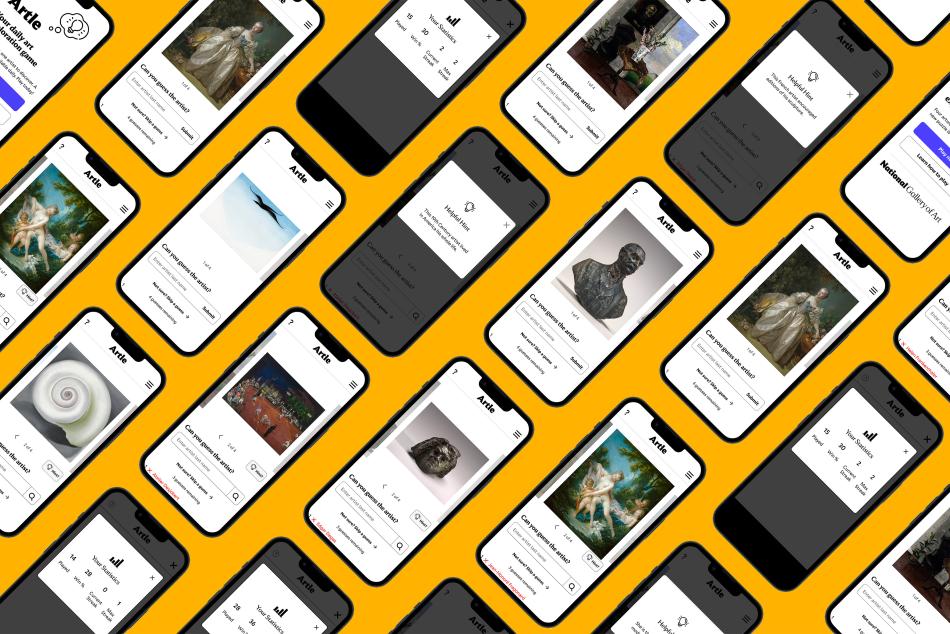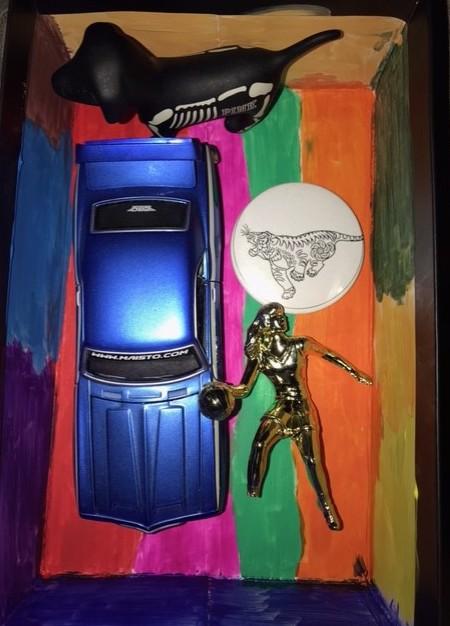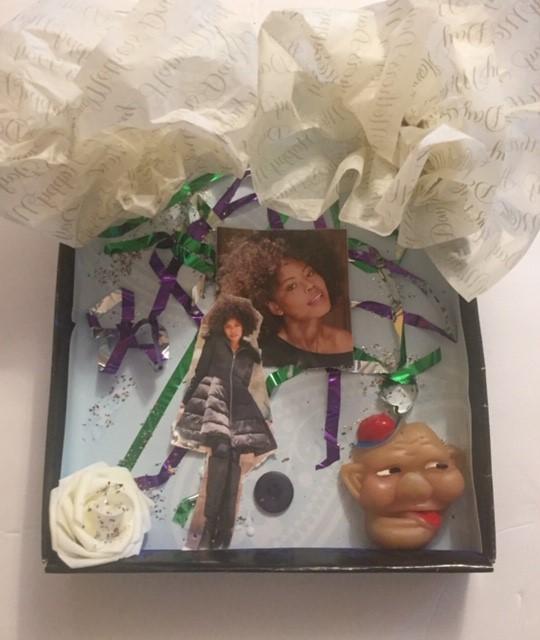Joseph Cornell liked to make art at his kitchen table. He never went to art school, and he didn’t draw or paint—instead, he made boxes. He filled these boxes with pictures and objects that he found on his walks around New York City.

Language
Look
What colors do you see? What shapes?
Do you see any patterns that repeat in the artwork? Point them out.
Does this artwork remind you of anything? What do you see that makes you say that?
What would you ask the child in this work of art? What would you ask the artist who made it?
What title would you give this artwork?
Read
Not a Box (Spanish language version: No es una caja)
by Antoinette Portis
A bunny explores how a box is not always just a box.
Mr. Cornell’s Dream Boxes
by Jeanette Winter
The book tells the story of Cornell's life and asks you to imagine living as a child with Cornell as your neighbor.
Make: Build a story box
You Will Need
- Shoe box or box lid
- Found objects such as shells, buttons, or small toys
- Assorted papers, magazines, and/or photographs
- Scissors
- Glue
- Small pieces of cardboard
- String or wire
- Paint and paintbrush (optional)
To start, you might want to paint your box a solid color and let it dry. Then, think about the pictures and objects you want to put in your box. Which ones seem to go together?
To build your box, first create a background by gluing printed or patterned paper to the inside of the box. Then arrange your objects until you are happy with where they are. For example, you might hang things from the top of the box with string or wire or use small pieces of cardboard to raise them up. When you are finished, glue the objects in place. What will you name your box?
Vocab Bank
- arrange
- object
- pattern
Download
Art Tales: Coloring and Cut-Outs booklet (PDF, 3.5 MB)
Art Tales for Pre-K (PDF, 7.2 MB)
Primeros Pasos En El Arte (PDF, 7.5 MB)
Primeros Pasos En El Arte: Colorear y Recortes (PDF, 3.7 MB)
Visit
Register for the Art Tales pre-K school tour
Submit Student Work
Send images of your students' projects that follow these activities - email [email protected]
You may also like

Educational Resource: Art Starters: Diego Rivera
A lesson for preschool to kindergarten students about artist Diego Rivera’s painting No. 9, Nature Morte Espagnole. Students learn how to look at this painting, what you can read to learn more, how to make a still life collage, and a list of vocabulary terms related to this activity.

Educational Resource: Art Starters: Henri Rousseau
A lesson for preschool to kindergarten students about artist Henri Rousseau’s painting Tropical Forest with Monkeys. Students learn how to look at this painting, what you can read to learn more, how to create imaginary jungle, and a list of vocabulary terms related to this activity.

Educational Resource: Art Starters: Mary Cassatt
A lesson for preschool to kindergarten students about artist Mary Cassatt's oil painting Little Girl in a Blue Armchair. Students learn how to look at this painting, what you can read to learn more, how to paint your own quiet moment, and a list of vocabulary terms related to this activity.




